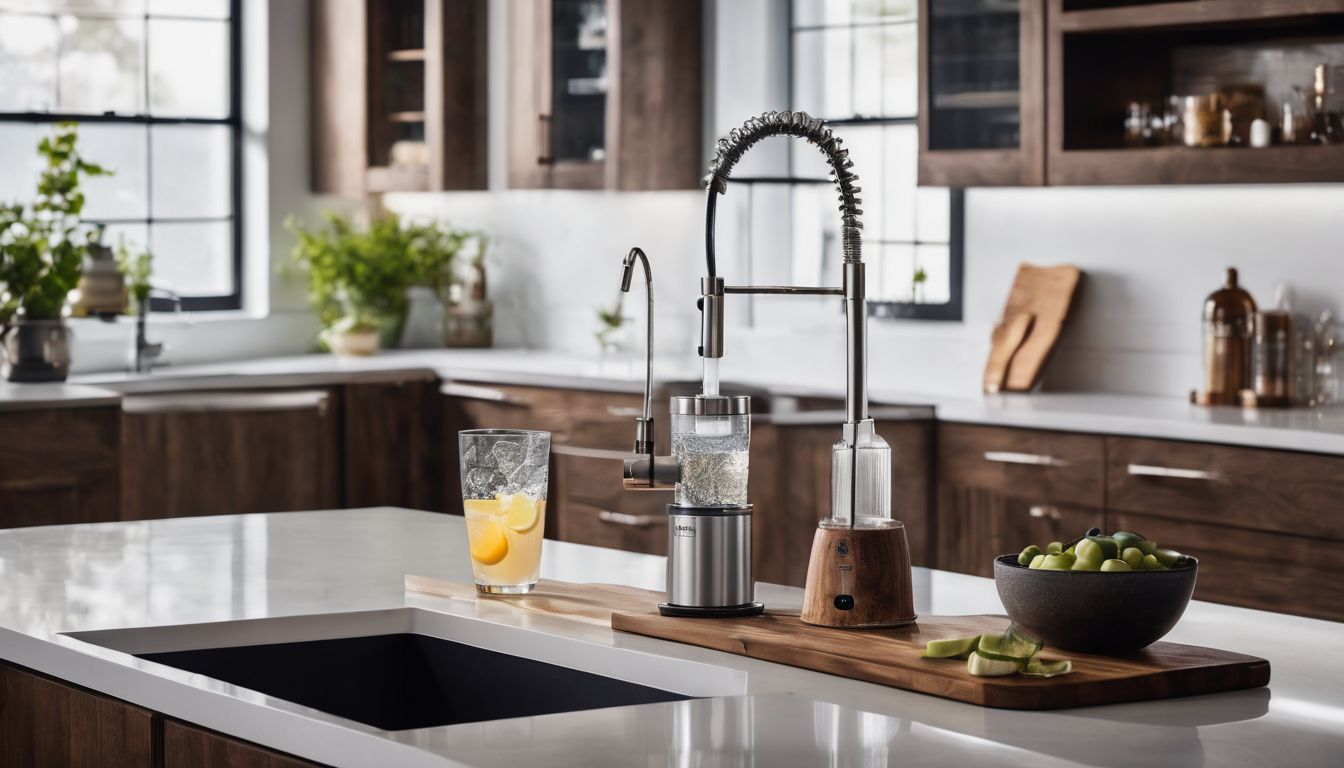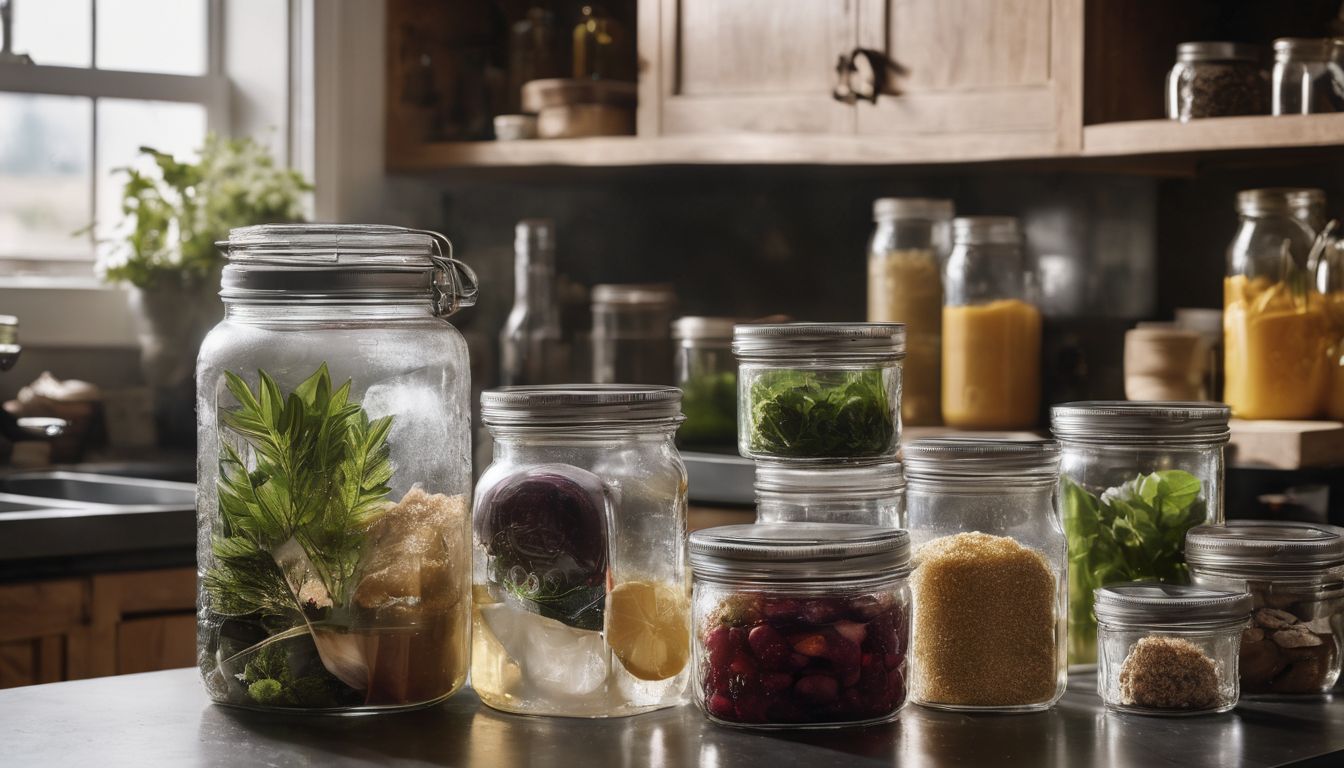Feeling stuffy indoors? Poor air quality might be to blame. Houseplants can be natural purifiers, clearing out pollutants and giving us cleaner air to breathe. Discover the top plants that’ll freshen up your space as you read on – let’s clear the air!
Key Takeaways
- Houseplants such as Aloe Vera, Peace Lily, and Spider Plant are natural air purifiers which can remove harmful toxins like formaldehyde and benzene from your home.
- Some plants are better suited for specific environments; for instance, the Snake Plant is ideal for low-light areas while the Boston Fern works well in humid conditions like bathrooms.
- Keeping pets safe around houseplants is essential; species such as the Areca Palm and Bamboo Palm are non-toxic to animals and great for homes with furry friends.
- Regular maintenance of plants, including proper watering based on their needs, access to adequate sunlight, and pruning will ensure they remain healthy and effective at cleaning indoor air.
- Air-purifying plants not only improve health by cleaning the environment but also add aesthetic value to spaces. They’re a sustainable choice that supports overall well-being.
The Importance of Indoor Air Quality
Indoor air quality is important for our overall health and well-being. Plants can help purify the air by removing toxins and improving oxygen levels, creating a healthier living environment for you and your family.
How plants can help purify the air
Plants have a natural ability to filter toxins from the air, making them powerful allies in enhancing indoor air quality. Through a process called photosynthesis, plants absorb carbon dioxide and release oxygen, contributing to cleaner air in your home or office.
They act like living air purifiers by taking in harmful chemicals such as formaldehyde and benzene, which are commonly found in household products.
Some greenery is exceptionally good at scrubbing the air clean. Certain species have evolved to thrive in environments where pollutants are present, using these compounds as a food source to grow.
Low-maintenance indoor plants can serve dual purposes – they not only decorate your space but significantly improve the breathability of your surroundings. Now that you understand how plants contribute to clean air, let’s explore the top ten purifying plants that you might consider for your living space.
Top 10 Air-Purifying Plants
Aloe Vera, Peace Lily, English Ivy, Spider Plant, Rubber Tree, Philodendron, Chinese Evergreen, Bamboo Palm, Boston Fern and Snake Plant are some of the best air-purifying plants for your indoor environment.
Read on to discover which plant is best suited for different environments and how to care for them.
Aloe Vera
Aloe Vera is an excellent air-purifying plant that not only enhances indoor air quality but also offers a variety of health benefits. This hardy succulent is known for its ability to remove formaldehyde and benzene from the air, making it an ideal choice for improving respiratory health.
Aloe Vera also adds a touch of greenery to any indoor environment and requires minimal maintenance, thriving in bright sunlight and well-drained soil. Its gel-like substance can be used topically to soothe minor burns and skin irritations, making it a versatile addition to any household concerned with healthy living.
This multi-purpose plant effectively filters indoor air while contributing to a pet-friendly environment due to its non-toxic nature – enhancing overall wellbeing without sacrificing aesthetics or clean air quality.
Peace Lily
Transitioning from Aloe Vera to the next air-purifying plant, Peace Lily is an excellent choice for both its ability to improve indoor air quality and its low-maintenance requirements.
With its elegant white flowers and dark green leaves, the Peace Lily adds a touch of natural beauty to any room while effectively filtering out harmful toxins such as benzene, formaldehyde, and trichloroethylene from the air.
This hardy plant thrives in low-light conditions making it an ideal addition to bedrooms or offices. Its air-purifying qualities make it a perfect choice for those looking to enhance indoor air quality without compromising on aesthetics or ease of care.
English Ivy
Transitioning to another air-purifying plant, English Ivy is a popular choice for its ability to filter out airborne toxins. It excels at removing formaldehyde, benzene, and trichloroethylene from indoor air, making it an excellent addition to any home seeking cleaner air.
With the capability to thrive in low light and cool temperatures, English Ivy is perfect for spaces that may not receive direct sunlight.
When considering plants for your living area or office space, consider adding English Ivy for its powerful air-purifying properties. Regularly keeping this plant around will enhance the quality of the air you breathe while introducing a touch of greenery into your surroundings – creating a healthier environment with minimal effort.
Spider Plant
Spider plants are known for their exceptional air-purifying qualities, making them an ideal choice for enhancing indoor air quality. These low-maintenance houseplants are effective at removing toxins such as formaldehyde and xylene from the air, promoting a healthier living environment.
Their ability to thrive in various light conditions makes them perfect for both bright and low-light spaces, offering versatility in placement within your home. Spider plants also have a knack for producing “babies” or offshoots that can be propagated easily, allowing you to expand your green oasis effortlessly.
Caring for spider plants is hassle-free; they require well-draining soil and moderate watering, making them an excellent option for anyone looking to incorporate easy-to-care-for greenery into their homes.
Rubber Tree
Moving on to the Rubber Tree, this versatile plant is a top-notch air purifier. It effectively removes toxins like formaldehyde from the air. Its large, glossy leaves also make it an attractive addition to any room, bringing both style and function into your indoor space.
With minimal care requirements, the Rubber Tree is ideal for those who want to enhance their living environment without much maintenance.
Caring for a Rubber Tree involves placing it in indirect sunlight and watering it when the soil feels dry. Regular dusting of its leaves will keep it looking fresh while ensuring that it can continue its excellent air-purifying work.
Philodendron
Philodendron is an excellent choice for purifying indoor air, removing pollutants like formaldehyde. It’s a low-maintenance plant that thrives in moderate to bright indirect light and can withstand occasional missed waterings, making it ideal for busy individuals looking to enhance their indoor air quality with minimal effort.
This versatile plant also comes in various sizes and leaf shapes, allowing you to find the perfect fit for your space while contributing to a healthier environment by filtering out harmful toxins.
This adaptable houseplant not only adds natural beauty but also helps create a cleaner and fresher indoor atmosphere, aligning perfectly with green living aspirations. With its air-purifying capabilities and easy care requirements, philodendron is an attractive option for those seeking to incorporate effective air purification into their home without compromising on aesthetic appeal or sustainability goals.
Chinese Evergreen
Transitioning from the Philodendron, another excellent air-purifying plant for enhancing indoor air quality is the Chinese Evergreen. With its vibrant green leaves and low maintenance requirements, this plant is ideal for individuals seeking to improve their home environment without much effort.
The Chinese Evergreen is known for its ability to remove toxins like formaldehyde and benzene from the air, making it a valuable addition to any indoor space.
This hardy plant thrives in low light conditions, making it perfect for rooms with minimal natural light. Additionally, it requires minimal watering and can tolerate periods of drought, perfect for those who may forget about their plants from time to time.
Bamboo Palm
Continuing from the benefits of Chinese Evergreen, Bamboo Palm is another potent air purifier. It removes harmful pollutants like formaldehyde and benzene. This pet-friendly plant thrives in indirect sunlight and can grow up to 12 feet high.
Its lush fronds make it an excellent decorative addition while improving indoor air quality. Regular watering keeps this low-maintenance plant healthy.
Transitioning now to our next featured plant, Boston Fern, which is prized for its air-purifying properties and vibrant green foliage.
Boston Fern
Moving on from the lush and tropical Bamboo Palm, the Boston Fern is another top contender for purifying indoor air. This elegant fern is valued not only for its decorative foliage but also for its remarkable ability to remove pollutants such as formaldehyde and xylene from the surrounding air.
With its feathery fronds, this low-maintenance plant thrives in humid conditions, making it an ideal choice for bathrooms or kitchens. The Boston Fern is a pet-friendly option, adding both style and cleaner air to any environment.
For those seeking a versatile and visually appealing addition to their indoor space, the Boston Fern offers both aesthetic beauty and practical benefits by improving overall air quality while requiring minimal effort to maintain.
Snake Plant
Moving on from the Boston Fern, another excellent choice for improving indoor air quality is the Snake Plant. This plant is known for its ability to thrive in low-light conditions and requires minimal maintenance, making it an ideal addition to any home or office space.
The Snake Plant is effective at removing toxins such as formaldehyde, xylene, toluene, and nitrogen oxide from the air, contributing to a cleaner and healthier environment. Its unique ability to release oxygen at night makes it a particularly beneficial plant for bedrooms.
The Snake Plant’s striking appearance with tall, sturdy leaves also adds a touch of elegance to any room while contributing to improved air quality. It’s an easy-care option that not only enhances interior aesthetics but also promotes overall well-being by purifying the surrounding air.
Best Plants for Different Environments
– Low-light Environments: Some air-purifying plants like Peace Lily and Spider Plant thrive in low-light conditions, making them perfect for rooms with little sunlight.
– Homes with Pets: Consider pet-friendly plants like the Boston Fern and Bamboo Palm that are safe for your furry friends to be around.
– Bathrooms: Plants such as Aloe Vera and Chinese Evergreen can thrive in the humid environment of bathrooms, helping to purify the air.
Low-Light Environments
Low-light environments are common in many homes, and it’s important to choose plants that can thrive in these conditions to improve air quality. Here are some of the best air-purifying plants suitable for low-light environments:
- Peace Lily – This elegant plant thrives in low light and is known for its ability to remove harmful toxins from the air, such as formaldehyde and benzene.
- Spider Plant – An excellent choice for low-light areas, this resilient plant effectively removes carbon monoxide and other impurities from indoor air.
- Snake Plant – Also known as mother-in-law’s tongue, this hardy plant can survive in low light while efficiently purifying the air by removing toxins such as formaldehyde and xylene.
- Boston Fern – A popular choice for its lush green fronds, this plant is well-suited for low-light environments and helps eliminate pollutants like formaldehyde and xylene.
- Chinese Evergreen – With its striking foliage, this versatile plant thrives in low light and effectively filters out common indoor air pollutants, including benzene and formaldehyde.
- Bamboo Palm – This attractive palm species can tolerate low light conditions while efficiently removing airborne toxins like formaldehyde and trichloroethylene.
- Cast Iron Plant – As the name suggests, this resilient plant can endure low-light settings and aids in improving indoor air quality by filtering out chemicals like formaldehyde.
- Parlour Palm – Ideal for adding a touch of tropical charm to dimly lit spaces, this hardy palm variety excels at purifying indoor air by targeting harmful substances like formaldehyde and xylene.
Homes with Pets
Air-purifying plants suitable for homes with pets include:
- Areca Palm: This plant is safe for cats and dogs while effectively removing toxins from the air such as formaldehyde.
- Money Plant: Known for its toxin-absorbing capabilities, this pet-friendly plant is easy to care for and helps maintain indoor air quality.
- Parlor Palm: Ideal for pet owners, this plant thrives in low light and effectively filters out common indoor pollutants.
- Boston Fern: Safe for pets, this lush fern works well in humid environments and removes pollutants like formaldehyde and xylene.
Bathrooms
Plants in bathrooms need to thrive in low light and high humidity. Here are some air-purifying plants that are perfect for bathrooms:
- Aloe Vera: Known for its air-purifying properties, it thrives in humid conditions and helps to remove formaldehyde and benzene from the air.
- Peace Lily: Ideal for bathrooms due to its love for high humidity; it also filters out harmful toxins like mould spores.
- Spider Plant: It’s an excellent choice as it thrives in moist environments and effectively removes air pollutants such as formaldehyde and xylene.
- Bamboo Palm: Perfect for adding a touch of greenery to your bathroom while purifying the air by removing airborne pollutants like benzene and trichloroethylene.
- Boston Fern: Thrives in high humidity which makes it a perfect fit for bathrooms; it’s great at removing indoor air pollutants like formaldehyde.
How to Care for Air-Purifying Plants
Properly watering and providing adequate sunlight are essential for maintaining air-purifying plants, as well as choosing the right size plant for your space and regularly maintaining and pruning them.
For more tips on how to care for these plants, keep reading!
Watering and Sunlight Needs
To ensure air-purifying plants thrive, it’s essential to understand their watering and sunlight needs. Different plants require different levels of light and water. For example, snake plants and Chinese evergreens can tolerate low light conditions, making them perfect for rooms with minimal natural light.
On the other hand, Boston ferns and bamboo palms thrive in indirect sunlight, so they should be placed near windows or well-lit areas. When it comes to watering, over-watering can lead to root rot, while under-watering can cause wilting.
It’s crucial to strike the right balance by allowing the soil to dry out slightly between waterings for most air-purifying plants.
Picking the Right Size Plant
When choosing an air-purifying plant, consider the available space in your home. Larger rooms can accommodate tall plants like bamboo palms or rubber trees, while smaller spaces may suit compact plants such as spider plants or aloe vera.
Ensure that the potential growth of the plant aligns with the designated area to avoid overcrowding and allow for proper air circulation around the plant.
Consider how much natural light is accessible in your chosen spot for a plant. Some air-purifying plants thrive in low-light conditions, making them suitable for rooms with minimal sunlight.
Maintenance and Pruning Tips
To keep your air-purifying plants thriving, regular maintenance and pruning are essential. Remove any dead or yellowing leaves to prevent the spread of disease and ensure optimal air purification.
Regularly wipe the leaves with a damp cloth to remove dust and keep them breathing clean air efficiently. Prune back overgrown stems to maintain a compact and healthy plant that can continue its air-purifying work effectively.
Regularly inspect your plants for signs of pests or diseases, and take immediate action if you notice any issues. This proactive approach will help maintain the health of your plants while ensuring they continue to freshen up your indoor environment.
Conclusion
Enhance your indoor air quality by adding air-purifying plants to your living space. Care for these plants by providing them with the right amount of water and sunlight. Choose the best plant for each environment, whether it’s a low-light area or a home with pets.
Enjoy clean, fresh air while supporting environmental conservation efforts!
FAQs
1. What are air purifying plants and how do they help?
Air purifying plants are houseplants that can clean the air in your home by absorbing pollutants, thus enhancing indoor air quality.
2. Can I have air purifying plants if I own pets?
Yes, there are many pet-safe plants that also work to improve the purification of indoor air without harming your furry friends.
3. Are there low-maintenance indoor plants that aid in air purification?
Certainly! Plenty of clean-air plants require minimal care, making them perfect for busy individuals or those new to plant care who still wish to benefit from better indoor air quality.
4. How often should I tend to my airpurifying houseplants for optimal performance?
Most of these plants only need regular watering and occasional feeding; however, each plant has its own needs so check the specific care instructions for best results in aiding with the purification of indoor air.





